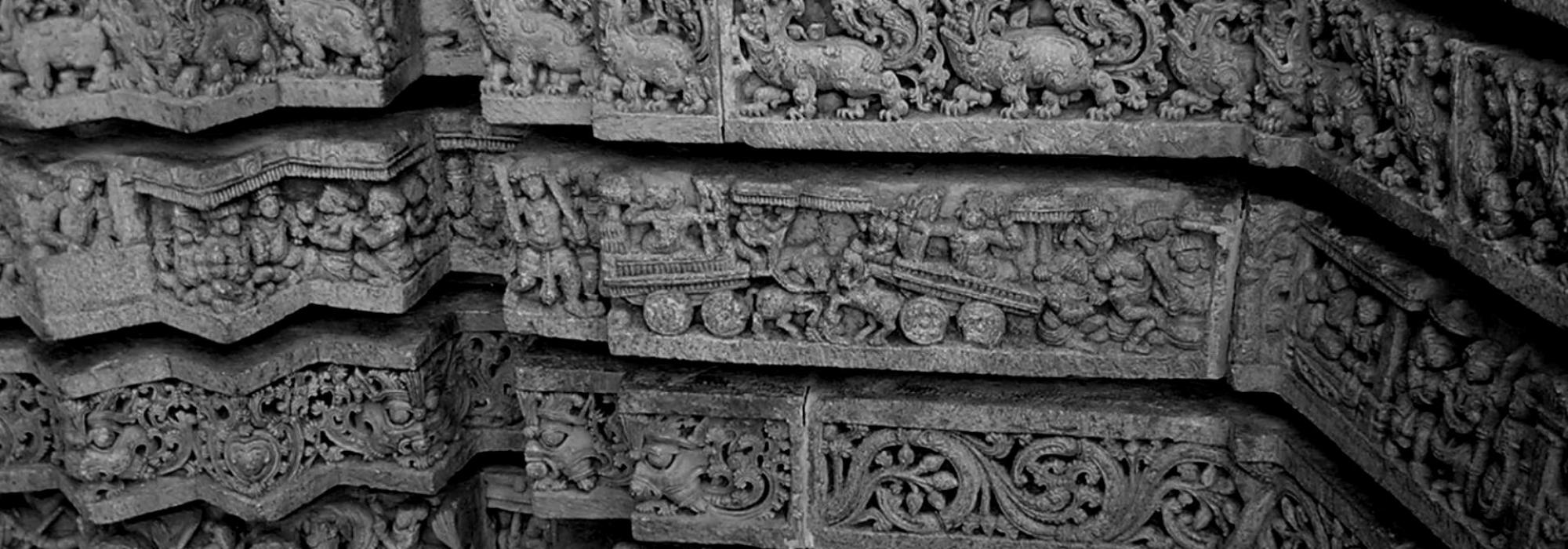In both the Vedas and the Puranas we can see a lineage of seers and kings. Again and again we see a reference to the panchajana in the Vedas; it is a reference to the five tribes (or clans) – यदु, द्रुह्यु, तुर्वष, पुरु, and आनु. The group that primarily ruled our country are the Purus. The Yadus and the Turvashas were under them. The Aanus and Druhyus went to various parts and settled there, creating colonies. In summary, we can say that these five tribes/clans grew like five families/dynasties. All these are primarily associated with the चन्द्रवंश – the moon dynasty. A branch of the chandravamsha is the Yadu dynasty. Another branch is the Bharata (or Kuru) dynasty. Even the सूर्यवंश – the sun dynasty – is famous. Both these dynasties have come from a common source.
The daughter of Vaivasvata Manu is Ila (or Ira). She married Budha (the son of Chandra) and gave birth to Pururava. From Pururava arose the chandravamsha, as he is a grandson of Chandra. Thus we can say that from Vaivasvata Manu’s daughter’s side, the chandravamsha grew. On the other hand, Manu’s son Ikshvaku gave rise to the suryavamsha. The descendants of these two major dynasties have been at the heart of many stories from the Puranas and have shaped the history of India.
All our ancient kings used to associate themselves with either the chandravamsha or the suryavamsha. It might seem that many of these kings, born and raised in various corners of India, wanted to associate themselves with such renowned dynasties for the sake of pomp and ego; however, one must not look down upon these kings with disdain. Such association with the greatness of the Indian kshaatra tradition and its fundamentals appears to have been necessary. Each person tries to find meaning and purpose to his/her life and existence. We must see this attempt as a source of pride and comfort. Without this, it is almost impossible to live; we will only see शून्यवाद. To uplift and enlighten ourselves, we need a chandravamsha, or a suryavamsha. When one says “काश्यपगोत्रः आपस्तम्बसूत्रः यजुःशाखाध्याये...” as part of a traditional introduction, the sense of “Since I have been born in the lineage of these great seers, I must live with honour and responsibility” is instilled, thus making us more aware of our actions. To strengthen and renew our commitment/responsibility, we turn to the various royal dynasties like the chandra and suryavamshas. We must observe that these have come to help us recognize our place (in the world, in society, in family, etc. both physically and metaphorically) and from that to know our duties and responsibilities. Our Puranas and Itihasas have repeatedly referred to those dynasties and traditions. This shows us that we must always be aware of our great kshaatra tradition.
सर्गश्च प्रतिसर्गश्च वंशो मन्वन्तराणि च वंशानुकीर्तनं चैव पुराणं पञ्चलक्षणम्
अमरकोश १४८.१८५
The five main themes of the Purāṇas are: सर्ग (primary creation), प्रतिसर्ग (secondary creation or deluge), वंश (lineage of deities, kings, and seers), मन्वन्तर (the life times of the fourteen manus), and वंशानुकीर्तनम् (achievements of the vamshas)
(Amarakosha 148.185)
The Puranas also speak of many smaller raja-vamshas like Magadha, Kekaya, Janaka (or Nimi), and Haihaya. They also record innumerable stories of great warriors, heroes, brave fighters, and above all, able rulers who had a great understanding and commitment to dharma. All this information is a fine testimony to kshaatra, to say the least.
Clearly, kshaatra is a realm of action; braahma, not so much. The quality of braahma is contentment and self-effacement. Whereas kshaatra is concerned about (and closely connected with) the entire world, and all its transactions and affairs. It has identified itself as inevitable to human heritage.
Translated from Kannada by Hari Ravikumar
(Translator’s notes in square brackets.)

















































